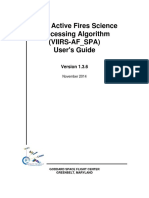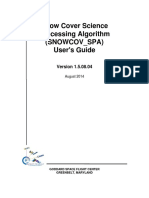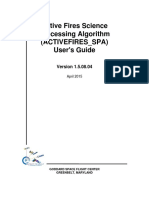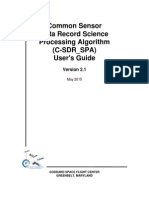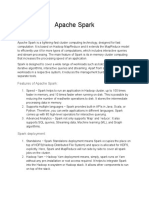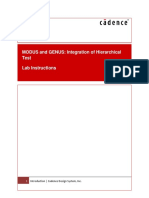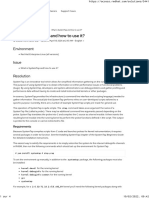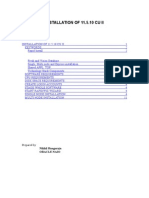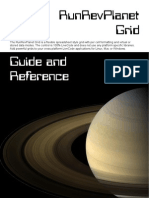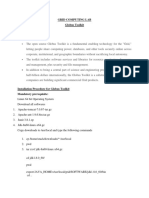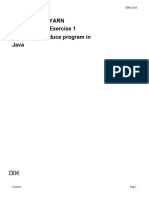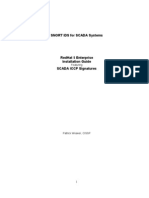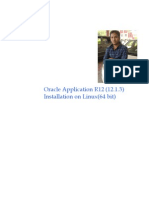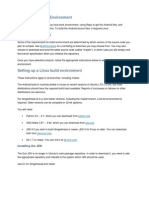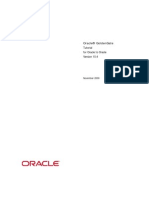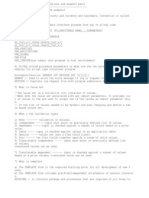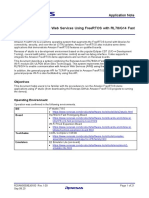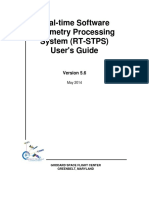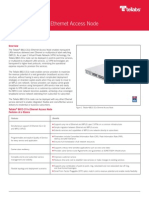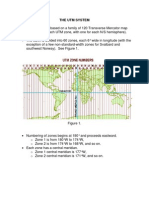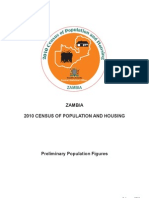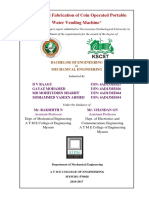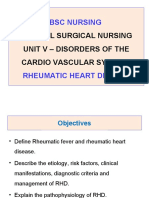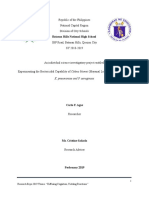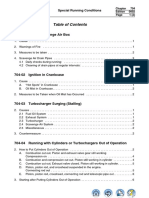VIIRS Cloud Mask Science Processing Algorithm (Cloudmask - Spa) User's Guide
VIIRS Cloud Mask Science Processing Algorithm (Cloudmask - Spa) User's Guide
Uploaded by
Nithindev GuttikondaCopyright:
Available Formats
VIIRS Cloud Mask Science Processing Algorithm (Cloudmask - Spa) User's Guide
VIIRS Cloud Mask Science Processing Algorithm (Cloudmask - Spa) User's Guide
Uploaded by
Nithindev GuttikondaOriginal Title
Copyright
Available Formats
Share this document
Did you find this document useful?
Is this content inappropriate?
Copyright:
Available Formats
VIIRS Cloud Mask Science Processing Algorithm (Cloudmask - Spa) User's Guide
VIIRS Cloud Mask Science Processing Algorithm (Cloudmask - Spa) User's Guide
Uploaded by
Nithindev GuttikondaCopyright:
Available Formats
VIIRS Cloud Mask Science
Processing Algorithm
(CLOUDMASK_SPA)
User's Guide
Version 1.5.08.04
April 2015
GODDARD SPACE FLIGHT CENTER
GREENBELT, MARYLAND
VIIRS Cloud Mask Science Processing Algorithm
CLOUDMASK_SPA
General
The NASA Goddard Space Flight Center’s (GSFC) Direct Readout Laboratory (DRL), Code
606.3 developed this software for the International Polar Orbiter Processing Package
(IPOPP). IPOPP maximizes the utility of Earth science data for making real-time decisions by
giving fast access to instrument data and derivative products from the Suomi National Polar-
orbiting Partnership (SNPP), Aqua, and Terra missions and, in the future, the Joint Polar
Satellite System (JPSS) mission.
Users must agree to all terms and conditions in the Software Usage Agreement on the DRL
Web Portal before downloading this software.
Software and documentation published on the DRL Web Portal may occasionally be updated
or modified. The most current versions of DRL software are available at the DRL Web Portal:
http://directreadout.sci.gsfc.nasa.gov/?id=software
Questions relating to the contents or status of this software and its documentation should be
addressed to the DRL via the Contact DRL mechanism at the DRL Web Portal:
http://directreadout.sci.gsfc.nasa.gov/?id=dspContent&cid=66
Algorithm Wrapper Concept
The DRL has developed an algorithm wrapper to provide a common command and execution
interface to encapsulate multi-discipline, multi-mission science processing algorithms. The
wrapper also provides a structured, standardized technique for packaging new or updated
algorithms with minimal effort.
A Science Processing Algorithm (SPA) is defined as a wrapper and its contained algorithm.
SPAs will function in a standalone, cross-platform environment to serve the needs of the broad
Direct Readout community. Detailed information about SPAs and other DRL technologies is
available at the DRL Web Portal.
Software Description
This software package contains the Visible Infrared Imaging Radiometer Suite (VIIRS) Cloud
Mask Science Processing Algorithm (CLOUDMASK_SPA). The VIIRS Cloud Mask algorithm
takes as input VIIRS I1, I2, I4, I5, M1, M4, M5, M7, M8, M9, M10, M11, M12, M13, M14, M15,
and M16 band Sensor Data Record (SDR) products; the VIIRS M-Band Terrain-corrected
Geolocation product; the VIIRS Active Fires Application Related Product (ARP); and
meteorological ancillaries. The SPA produces the mission-compliant VIIRS Cloud Mask IP
HDF5 product. The SPA functions in two modes: Standalone, or as an IPOPP plug-in.
CLOUDMASK_SPA Page 1 April 2015
Software Version
Version 1.5 of the DRL algorithm wrapper was used to package the SPA described in this
document. The VIIRS Cloud Mask algorithm has been ported from the Interface Data
Processing System (IDPS) OPS Version 1.5.08.04.
Enhancements to this SPA include advanced capabilities to meet low latency requirements,
available in both Standalone and IPOPP Mode (IPOPP v2.4 or later).
This software will execute on a 64-bit computer and has been tested on computers with 32GB
of RAM, with the following operating systems:
a) Fedora 20 X86_64;
b) CentOS Linux 7 X86_64;
c) OpenSUSE Linux 12.1 X86_64;
d) Kubuntu 14.04 X86_64.
Copyright 1999-2007, United States Government as represented by the Administrator for the
National Aeronautics and Space Administration. All Rights Reserved.
Credits
The VIIRS Cloud Mask algorithm was provided to the DRL by the JPSS Mission. This
algorithm was ported to run outside of the IDPS by the DRL in collaboration with the Land
Product Evaluation and Algorithm Test Element (LPEATE).
Prerequisites
To run this package, you must have the Java Development Kit (JDK) or Java Runtime
Engine (JRE) (Java 1.6.0_25 or higher) installed on your computer, and have the Java
installation bin/ subdirectory in your PATH environment variable. This package contains 64-
bit binaries statically pre-compiled on an x86-compatible 64-bit computer running under
Fedora 14, using gcc 4.5.1.
Program Inputs and Outputs
The SPA uses the following inputs:
a) VIIRS I1, I2, I4, I5, M1, M4, M5, M7, M8, M9, M10, M11, M12, M13, M14, M15, and
M16 band Sensor Data Record (SDR) products;
b) VIIRS M-Band Terrain-corrected Geolocation product;
c) VIIRS Active Fires ARP Product; and
d) meteorological ancillaries.
The SPA produces the mission-compliant VIIRS Cloud Mask Intermediate Product (IP) HDF5
product as output.
CLOUDMASK_SPA Page 2 April 2015
Installation and Configuration
Installing as a Standalone Application:
Download the CLOUDMASK_1.5.08.04_SPA_1.5.tar.gz and
CLOUDMASK_1.5.08.04_SPA_1.5_testdata.tar.gz (optional) files into the same directory.
Decompress and un-archive the CLOUDMASK_1.5.08.04_SPA_1.5.tar.gz and
CLOUDMASK_1.5.08.04_SPA_1.5_testdata.tar.gz (optional) files:
$ tar –xzf CLOUDMASK_1.5.08.04_SPA_1.5.tar.gz
$ tar –xzf CLOUDMASK_1.5.08.04_SPA_1.5_testdata.tar.gz
This will create the following subdirectories:
SPA
CloudMask
algorithm
ancillary
mode
station
testdata
testscripts
wrapper
Installing into an IPOPP Framework: This SPA can also be installed dynamically into an
IPOPP framework to automate production of VIIRS Cloud Mask IP data products. The SPA
installation process will install SPA service(s) into IPOPP. An SPA service is an IPOPP agent
that provides the mechanism necessary for running an SPA automatically within the IPOPP
framework. Once this SPA is installed, users must enable the service(s) corresponding to this
SPA along with any other Prerequisite service(s). Instructions for installing an SPA and
enabling its services are contained in the IPOPP User’s Guide (available on the DRL Web
Portal). The SPA services associated with this SPA are listed in Appendix A.
Software Package Testing and Validation
The testscripts subdirectory contains test scripts that can be used to verify that your current
installation of the SPA is working properly, as described below. Note that the optional
CLOUDMASK_1.5.08.04_SPA_1.5_testdata.tar.gz file is required to execute these testing
procedures.
Step 1: cd into the testscripts directory.
Step 2: There is a script named run-vcm inside the testscripts directory.
To run the VIIRS Cloud Mask algorithm, use
$ ./run-vcm
CLOUDMASK_SPA Page 3 April 2015
A successful execution usually requires three minutes or more, depending on the speed of
your computer and the size of the input. If everything is working properly, the scripts will
terminate with a message such as:
Output viirs.cmip is /home/ipopp/drl/SPA/CloudMask/testdata/output/IICMO.h5
You can cd to the output directory to verify that the science products exist. Test output
product(s) are available for comparison in the testdata/output directory. These test output
product(s) were generated on a 64-bit PC architecture computer running Fedora 14. The
output products serve as an indicator of expected program output. Use a comparison utility
(such as diff, h5diff, etc.) to compare your output product(s) to those provided in the
testdata/output directory. Locally generated files may differ slightly from the provided output
files because of differences in machine architecture or operating systems.
If there is a problem and the code terminates abnormally, the problem can be identified using
the log files. Log files are automatically generated within the directory used for execution.
They start with stdfile* and errfile*. Other log and intermediate files may be generated
automatically within the directory used for execution. They are useful for traceability and
debugging purposes. However it is strongly recommended that users clean up log files and
intermediate files left behind in the run directory before initiating a fresh execution of the SPA.
Intermediate files from a previous run may affect a successive run and produce ambiguous
results. Please report any errors that cannot be fixed to the DRL.
Program Operation
In order to run the package using your own input data, you can either use the run scripts within
the wrapper subdirectories, or modify the test scripts within the testscripts subdirectory.
To Use the Run Scripts
Identify the 'run' scripts: The wrapper directory within this package contains one
subdirectory named CloudMask. The subdirectory contains an executable called 'run'.
Execute 'run' within the correct wrapper subdirectory to generate the corresponding product.
For instance, the 'run' within wrapper/CloudMask is used for creating VIIRS Cloud Mask
outputs. Note that to execute 'run', you need to have java on your path.
Specify input parameters using <label value> pairs: To execute the 'run' scripts, you must
supply the required input and output parameters. Input and output parameters are usually file
paths or other values (e.g., an automatic search flag). Each parameter is specified on the
command line by a <label value> pair. Labels are simply predefined names for parameters.
Each label must be followed by its actual value. Each process has its own set of <label value>
pairs that must be specified in order for it to execute. Some of these pairs are optional,
meaning the process would still be able to execute even if that parameter is not supplied. The
three types of <label value> pairs that the CLOUDMASK_SPA uses are:
a) Input file label/values. These are input file paths. Values are absolute or relative paths
to the corresponding input file.
b) Output file label/values. These are output files that are produced by the SPA. Values
are absolute or relative paths of the files you want to generate.
CLOUDMASK_SPA Page 4 April 2015
c) Parameter label/values. These are parameters that need to be passed into the SPA
(e.g., scan time).
The following tables contain labels, and their descriptions, required by the
CLOUDMASK_SPA.
Input File Labels Description Source
viirs.gmtco VIIRS Moderate Resolution Band
1. The C-SDR_SPA and VIIRS-SDR_SPA can
Terrain-Corrected Geolocation
be used to create these products.
input HDF5 file path
2. Real time VIIRS SDR and Geolocation
viirs.svixx VIIRS Imagery Resolution Band Ix products over the eastern US region are
{x = 1, 2, 4, 5} SDR input HDF5 file available from the DRL ftp site at:
{xx = 01, 02, 04,
path ftp://is.sci.gsfc.nasa.gov/gsfcdata/npp/viirs/le
05}
vel1/<GMTCO|SVIxx|SVMxx>_npp_dyyyym
mdd_thhmmssS_ehhmmssS*.h5
viirs.svmxx VIIRS Moderate Resolution Band
Mx {x = 1, 4, 5, 7 to 16} SDR input Where yyyy, mm, dd represents the year,
{xx = 01, 04, 05, 07
HDF5 file path month, and day of month for the start of the
to 16}
swath; the first hh, mm, ss, S represents the
hour, minutes, seconds, and 10th of a second
for the start of the swath and the second hh,
mm, ss, S represents the end time of the
swath.
3. VIIRS SDR and Geolocation products for
other locations and times are available for
download at www.class.noaa.gov
viirs.vafip VIIRS Active Fires ARP input
1. The ACTIVEFIRES_SPA can be used to
HDF5 file path
(Optional) create these products.
2. Real time VIIRS Active Fires ARP products
over the eastern US region are available from
the DRL ftp site at:
ftp://is.sci.gsfc.nasa.gov/gsfcdata/npp/viirs/le
vel2/AVAFO_npp_dyyyymmdd_thhmmssS_
ehhmmssS*.h5
Where yyyy, mm, dd represents the year,
month, and day of month for the start of the
swath; the first hh, mm, ss, S represents the
hour, minutes, seconds, and 10th of a second
for the start of the swath and the second hh,
mm, ss, S represents the end time of the
swath.
ncep_met NCEP Numerical Weather For recent files go to:
Prediction Gridded Binary (GRIB) ftp://is.sci.gsfc.nasa.gov/ancillary/temporal/global/gd
File. This can be either a Global as/
Data Assimilation System
(GDAS1, 6 hourly, 1 degree For archived files go to:
global) analysis field file or a ftp://is.sci.gsfc.nasa.gov/ArchivedAncillary/temporal/
Global Model Forecast Fields global/gdas/
(GFS) file (The GDAS and GFS
CLOUDMASK_SPA Page 5 April 2015
Input File Labels Description Source
files must be in grib1 format).
Refer to the “NOTES” section
below for more details regarding
these meteorological ancillary file
inputs.
ssmi_nise National Snow and Ice Data For recent files go to:
Center (NSIDC) Near-real time Ice ftp://is.sci.gsfc.nasa.gov/ancillary/temporal/global/nis
and Snow Extent (NISE) (1 e/NISE_SSMIF13_yyyymmdd.HDFEOS
degree, global, daily)
For archived files go to:
ftp://is.sci.gsfc.nasa.gov/ArchivedAncillary/temporal/
global/nise/NISE_SSMIF13_yyyymmdd.HDFEOS
Where yyyy, mm, dd represents the year, month, and
day for the NSIDC NISE ancillary file
Parameters Description
scantime Parameter representing the inputs’ scan start time in yyyymmdd format (e.g. 20140901)
Output File Description
Labels
viirs.cmip VIIRS Cloud Mask IP output HDF5 file path
Execute the 'run': The following script shows an example of a command line to run the VIIRS
Cloud Mask algorithm from the testscripts directory:
$ ../wrapper/CloudMask/run \
ncep_met ../testdata/input/gdas1.PGrbF00.140901.18z \
ssmi_nise ../testdata/input/NISE_SSMIF13_20140901.HDFEOS \
scantime 20140901 \
viirs.gmtco ../testdata/input/GMTCO_npp_d20140901_t1738560_e1740201_b14746_c20140908200702642321_noaa_ops.h5 \
viirs.svm01 ../testdata/input/SVM01_npp_d20140901_t1738560_e1740201_b14746_c20140908200638045758_noaa_ops.h5 \
viirs.svm04 ../testdata/input/SVM04_npp_d20140901_t1738560_e1740201_b14746_c20140908200714715029_noaa_ops.h5 \
viirs.svm05 ../testdata/input/SVM05_npp_d20140901_t1738560_e1740201_b14746_c20140908200735223402_noaa_ops.h5 \
viirs.svm07 ../testdata/input/SVM07_npp_d20140901_t1738560_e1740201_b14746_c20140908200729256422_noaa_ops.h5 \
viirs.svm08 ../testdata/input/SVM08_npp_d20140901_t1738560_e1740201_b14746_c20140908200803979409_noaa_ops.h5 \
viirs.svm09 ../testdata/input/SVM09_npp_d20140901_t1738560_e1740201_b14746_c20140908200743076006_noaa_ops.h5 \
viirs.svm10 ../testdata/input/SVM10_npp_d20140901_t1738560_e1740201_b14746_c20140908200925075349_noaa_ops.h5 \
viirs.svm11 ../testdata/input/SVM11_npp_d20140901_t1738560_e1740201_b14746_c20140908200858348915_noaa_ops.h5 \
viirs.svm12 ../testdata/input/SVM12_npp_d20140901_t1738560_e1740201_b14746_c20140908200844775167_noaa_ops.h5 \
viirs.svm13 ../testdata/input/SVM13_npp_d20140901_t1738560_e1740201_b14746_c20140908200931364181_noaa_ops.h5 \
viirs.svm14 ../testdata/input/SVM14_npp_d20140901_t1738560_e1740201_b14746_c20140908200652259426_noaa_ops.h5 \
viirs.svm15 ../testdata/input/SVM15_npp_d20140901_t1738560_e1740201_b14746_c20140908200911898965_noaa_ops.h5 \
viirs.svm16 ../testdata/input/SVM16_npp_d20140901_t1738560_e1740201_b14746_c20140908200729274370_noaa_ops.h5 \
viirs.svi01 ../testdata/input/SVI01_npp_d20140901_t1738560_e1740201_b14746_c20140908200814185302_noaa_ops.h5 \
viirs.svi02 ../testdata/input/SVI02_npp_d20140901_t1738560_e1740201_b14746_c20140908200817203819_noaa_ops.h5 \
viirs.svi04 ../testdata/input/SVI04_npp_d20140901_t1738560_e1740201_b14746_c20140908200756074531_noaa_ops.h5 \
viirs.svi05 ../testdata/input/SVI05_npp_d20140901_t1738560_e1740201_b14746_c20140908200946032012_noaa_ops.h5 \
viirs.vafip ../testdata/input/AVAFO_npp_d20140901_t1738560_e1740201_b14746_c20140908200729274370_all-_dev.h5 \
viirs.cmip ../testdata/output/IICMO.h5
CLOUDMASK_SPA Page 6 April 2015
A successful execution usually requires three minutes or more, depending on the speed of
your computer and the size of the input. If execution fails, you will see an error message
indicating the cause of failure (e.g., a file cannot be found, or a label cannot be recognized).
Correct it and run again. If the problem has some other cause, it can be identified using the
log files. Log files are automatically generated within the directory used for execution. They
start with stdfile* and errfile* and can be deleted after execution. Other log and intermediate
files may be generated automatically within the directory used for execution. They are useful
for traceability and debugging purposes. However it is strongly recommended that users clean
up log files and intermediate files left behind in the run directory before initiating a fresh
execution of the SPA. Intermediate files from a previous run may affect a successive run and
produce ambiguous results. The 'run' can be executed from any directory the user chooses.
This can be done by prefixing it with the file path for the 'run' script.
NOTES:
1. ncep_met: Either GDAS or Global Model Forecast Fields (GFS) files may be used for
the ncep_met label. Try to use a GDAS file that is within ±3 hours of the SDR
observation time. If that file is not available (as is often the case for real-time
processing), use a GFS file instead. The naming convention for grib1 gfs files is
gfs.thh.yymmdd.pgrbfxx (here yymmddd and hh represent analysis time, and xx
represents forecast time step). Thus a file named gfs.t12.100201.pgrbf03 corresponds
to 1500 hours (12+3) UTC on February 1, 2010. If you have to choose GFS data as
input, you should attempt to use a file that is within ±1.5 hours of the SDR file. If there
is more than one such GFS file, use the one with the smaller forecast time step. For
example, if your data time is 15 UTC, you should try to use the 3 hour forecast field
from the 1200 UTC model run, instead of the 9 hour forecast field from the 0600 UTC
run. If no GDAS or GFS file is available using the above logic, use a GDAS file that is
closest in time but within ±7 days of the granule time.
2. ssmi_nise: The dates for the NSIDC Near-real time Ice and Snow Extent (NISE)
datasets should be as close as possible to the dates of the L1B granules. It is
recommended to use an ancillary file that is within ±14 days of the granule time. The
dates for the NISE ancillary files are encoded in the filenames as
NISE_SSMIF13_yyyymmdd.HDFEOS. The ssmi_nise files are required for all
products.
3. viirs.vafip: If used, the VIIRS Active Fires ARP input data product must be generated
using the ACTIVEFIRES_SPA. This is because the VIIRS Cloud Mask algorithm
expects the VIIRS Active Fires ARP input to contain the “fireMask” dataset in it.
4. The data products generated by this SPA may be visualized with the DRL's H2G_SPA
(Hierarchical Data Format [HDF] to Georeferenced Tagged Image File Format
[GeoTIFF] Converter Science Processing Algorithm). H2G is designed specifically for
Direct Readout applications to create geolocated GeoTIFF images, jpeg browse
images, and png browse images for parameter datasets in SNPP products and EOS
products. H2G_SPA and its User Guide are available for download from the DRL Web
CLOUDMASK_SPA Page 7 April 2015
Portal. Please refer to Appendix A for information on enabling image production for this
SPA in IPOPP.
To Use the Scripts in the testscripts Directory
One simple way to run the algorithms from the directory of your choice using your own data
is to copy the run-vcm script from the testscripts directory to the selected directory. Change
the values of the variables like WRAPPERHOME, INPUTHOME and OUTPUTHOME to
reflect the file paths of the wrapper directories and the input/output file paths. Then modify the
input/output file name variables. Run the script to process your data.
CLOUDMASK_SPA Page 8 April 2015
Appendix A
SPA Services
Installation of this SPA in IPOPP mode will make the SPA services listed in Table A-1 available
to IPOPP. These services along with any other Prerequisite services (listed in Table A-2) will
need to be enabled to allow IPOPP to automate production of the CLOUDMASK_SPA data
products. Furthermore, users who wish to generate image products from the data products
generated by this SPA will need to enable the image-generating services listed in Table A-3.
The SPAs containing the Prerequisite and the image-generating services listed in Tables A-2
and A-3 can be downloaded from the DRL Web Portal, in case they are not already available
in your IPOPP installation. Details about these other SPAs are available in the respective SPA
User's Guide. Please refer to the IPOPP User’s Guide for instructions on how to install an
SPA in IPOPP and enable the corresponding services.
Table A-1. SPA Services
Services for this Data Products produced
SPA
CloudMask Product Name Destination
(when installed in IPOPP)
VIIRS Cloud Mask IP /raid/pub/gsfcdata/npp/viirs/level2/IICM
O_npp_dyyyymmdd_thhmmssS_ehhm
mssS*.h5*
* Where yyyy, mm, dd, hh represents the year, month and day of month for start of swath; the
first hh, mm, ss, S represents the hour, minutes, seconds and 10th of a second for the start
of swath and the second hh, mm, ss, S represents the end time of the swath.
Table A-2. Prerequisite Services
Prerequisite SPA services SPA in which they are available
VIIRS_C-SDR C-SDR_SPA
OR
VIIRS-SDR VIIRS-SDR_SPA
NOTE: The services VIIRS-SDR and VIIRS_C-SDR must never be run simultaneously.
Table A-3. Image-generating Services
Image-generating services SPA in which they are available
vcmmaskh5-geotiff H2G_SPA
vcmphaseh5-geotiff
NOTE: Please refer to the H2G_SPA User’s Guide for more details about the image products,
including their locations and filename patterns when they are generated in IPOPP.
CLOUDMASK_SPA Page A-1 April 2015
You might also like
- Masonry ToolsDocument33 pagesMasonry ToolsMichelle Awa-ao33% (3)
- VIIRS Cloud Optical Properties Science Processing Algorithm (COP - SPA) User's GuideDocument10 pagesVIIRS Cloud Optical Properties Science Processing Algorithm (COP - SPA) User's GuideNithindev GuttikondaNo ratings yet
- VIIRS Surface Reflectance Science Processing Algorithm (Surfreflect - Spa) User's GuideDocument11 pagesVIIRS Surface Reflectance Science Processing Algorithm (Surfreflect - Spa) User's GuideNithindev GuttikondaNo ratings yet
- VIIRS Active Fires Science Processing Algorithm (Viirs-Af - Spa) User's GuideDocument9 pagesVIIRS Active Fires Science Processing Algorithm (Viirs-Af - Spa) User's GuideNithindev GuttikondaNo ratings yet
- Common Sensor Data Record Science Processing Algorithm (C-SDR - SPA) User's GuideDocument18 pagesCommon Sensor Data Record Science Processing Algorithm (C-SDR - SPA) User's GuideNithindev GuttikondaNo ratings yet
- Snow Cover Science Processing Algorithm (Snowcov - Spa) User's GuideDocument9 pagesSnow Cover Science Processing Algorithm (Snowcov - Spa) User's GuideNithindev GuttikondaNo ratings yet
- Viirs-Af 1.3.6 Spa 1.7Document10 pagesViirs-Af 1.3.6 Spa 1.7guttikondanithindevNo ratings yet
- VIIRS Land Surface Temperature (LST) Science Processing Algorithm (LST - SPA) User's GuideDocument9 pagesVIIRS Land Surface Temperature (LST) Science Processing Algorithm (LST - SPA) User's GuideNithindev GuttikondaNo ratings yet
- VIIRS Vegetation Index (VI) Science Processing Algorithm (VEGINDEX - SPA) User's GuideDocument8 pagesVIIRS Vegetation Index (VI) Science Processing Algorithm (VEGINDEX - SPA) User's GuideNithindev GuttikondaNo ratings yet
- Active Fires Science Processing Algorithm (Activefires - Spa) User's GuideDocument8 pagesActive Fires Science Processing Algorithm (Activefires - Spa) User's GuideNithindev GuttikondaNo ratings yet
- L2GEN Science Processing Algorithm (L2GEN - SPA) User's Guide: February 2017Document16 pagesL2GEN Science Processing Algorithm (L2GEN - SPA) User's Guide: February 2017Nithindev GuttikondaNo ratings yet
- MODIS Level 2 Corrected Reflectance Science Processing Algorithm (CREFL - SPA) User's GuideDocument10 pagesMODIS Level 2 Corrected Reflectance Science Processing Algorithm (CREFL - SPA) User's GuideguttikondanithindevNo ratings yet
- Common Sensor Data Record Science Processing Algorithm (C-SDR - SPA) User's GuideDocument18 pagesCommon Sensor Data Record Science Processing Algorithm (C-SDR - SPA) User's GuideReuel JunqueiraNo ratings yet
- OMPSNADIR Science Processing Algorithm (Ompsnadir - Spa) User's GuideDocument12 pagesOMPSNADIR Science Processing Algorithm (Ompsnadir - Spa) User's GuideNithindev GuttikondaNo ratings yet
- Modis Level 2 Imapp Atmospheric Science Processing Algorithm (Imapp - Spa) User's GuideDocument16 pagesModis Level 2 Imapp Atmospheric Science Processing Algorithm (Imapp - Spa) User's GuideNithindev GuttikondaNo ratings yet
- Word Count Exercise InstructionsDocument3 pagesWord Count Exercise InstructionsAshwin AjmeraNo ratings yet
- Features of Apache SparkDocument7 pagesFeatures of Apache SparkSailesh ChauhanNo ratings yet
- Extract Essbase Outline To SQL DatabaseDocument21 pagesExtract Essbase Outline To SQL Databasehoola81No ratings yet
- Manual PyradDocument25 pagesManual PyradVictor Pepinboy0% (1)
- Opensource User Guide For Opensource Wireless-G Router Kwgr614Document14 pagesOpensource User Guide For Opensource Wireless-G Router Kwgr614urenhuNo ratings yet
- Project CatalogueDocument21 pagesProject CatalogueSinshaw BekeleNo ratings yet
- Hiertest RAK Lab 16.1Document41 pagesHiertest RAK Lab 16.1Veeranjaneyulu Dhikonda100% (1)
- What Is SystemTap and How To Use It? - Red Hat Customer PortalDocument4 pagesWhat Is SystemTap and How To Use It? - Red Hat Customer Portalgus2 eiffelNo ratings yet
- Vendor Sample ProjectsDocument10 pagesVendor Sample ProjectsRrhh EstNo ratings yet
- Using R&S Signal, Spectrum With MATLABDocument10 pagesUsing R&S Signal, Spectrum With MATLABStarLink1No ratings yet
- MapReduce Hands OnDocument28 pagesMapReduce Hands Onvarun3dec1No ratings yet
- Advanced Programming Using The Spark Core API: in This ChapterDocument69 pagesAdvanced Programming Using The Spark Core API: in This ChapterHuy NguyễnNo ratings yet
- Installation of 11510Document20 pagesInstallation of 11510api-3745837100% (1)
- Calculating Oracle Dataguard Network Bandwidth in SAP Environments PDFDocument7 pagesCalculating Oracle Dataguard Network Bandwidth in SAP Environments PDFEdy Suranta S MahaNo ratings yet
- BDALab Assn5Document16 pagesBDALab Assn5Deepti AgrawalNo ratings yet
- Spart Part 2Document44 pagesSpart Part 2Aleena Nasir100% (1)
- DSBDSAssingment 11Document20 pagesDSBDSAssingment 11403 Chaudhari Sanika SagarNo ratings yet
- RunRev Guide and ReferenceDocument135 pagesRunRev Guide and ReferenceGiuseppe OnorevoliNo ratings yet
- RAPID Deployment Guide 9.7.1Document23 pagesRAPID Deployment Guide 9.7.1RemNo ratings yet
- Sharp PcapDocument21 pagesSharp PcapTamir GalNo ratings yet
- Grid Computing LabDocument61 pagesGrid Computing LabDharsini ThinakaranNo ratings yet
- MR YARN - Lab 2 - Cloud - Updated-V2.0Document22 pagesMR YARN - Lab 2 - Cloud - Updated-V2.0bender1686No ratings yet
- DAN Lab ManuaLDocument53 pagesDAN Lab ManuaLSARANYA ANo ratings yet
- Graphite Grafana Quick Start v1.4Document25 pagesGraphite Grafana Quick Start v1.4tatreromanosNo ratings yet
- Qualnet Tutorial: DR - Narmada AlaparthiDocument31 pagesQualnet Tutorial: DR - Narmada AlaparthinarmadaNo ratings yet
- ERTS - 2018 - Paper - 46 2Document10 pagesERTS - 2018 - Paper - 46 2Hesham YaseinNo ratings yet
- MR YARN - Lab 1 - Cloud - Updated-V2.0Document30 pagesMR YARN - Lab 1 - Cloud - Updated-V2.0BPSMB SulselNo ratings yet
- GCC Lab Manual2Document50 pagesGCC Lab Manual2arungladstonNo ratings yet
- Snort Rh5 ScadaDocument27 pagesSnort Rh5 ScadaborjalanserosNo ratings yet
- As400 Interview Questions Answers - Part 3Document3 pagesAs400 Interview Questions Answers - Part 3Sharique HussainNo ratings yet
- Oracle Apps Technical Interview Questions AnswersssDocument79 pagesOracle Apps Technical Interview Questions AnswersssdurgaNo ratings yet
- R12 IntvqDocument51 pagesR12 IntvqRajesh KumarNo ratings yet
- Oracle Ebs R12!1!3installationlinux64bitDocument31 pagesOracle Ebs R12!1!3installationlinux64bitRAVI KUMAR LANKENo ratings yet
- Using Dynamips For CCIE Lab Preparation On A PCDocument20 pagesUsing Dynamips For CCIE Lab Preparation On A PCkktamang09No ratings yet
- Airlines Dynamic PricingDocument24 pagesAirlines Dynamic PricingAsma TekitekNo ratings yet
- 05 Programmer's Reference, With Instructions On How To Execute The ProgramDocument43 pages05 Programmer's Reference, With Instructions On How To Execute The ProgramPhil SunnyNo ratings yet
- Upgrade Oracle Applications From 11Document32 pagesUpgrade Oracle Applications From 11Kshitiz Chauhan100% (1)
- Initializing A Build EnvironmentDocument26 pagesInitializing A Build EnvironmentMuhammad AliNo ratings yet
- Oracle® Goldengate: Tutorial For Oracle To OracleDocument18 pagesOracle® Goldengate: Tutorial For Oracle To OracleprajwaldbaNo ratings yet
- Oracle Apps Interview Questions and Answers Part1Document6 pagesOracle Apps Interview Questions and Answers Part1Balaji ShindeNo ratings yet
- Pyspark IQDocument13 pagesPyspark IQRahuldada Mahadik Yuva ShaktiNo ratings yet
- REN R20an0559ej0100-Rl78-Rtos APN 20200907Document23 pagesREN R20an0559ej0100-Rl78-Rtos APN 20200907Andrea FasatoNo ratings yet
- BDT Lab ManualDocument34 pagesBDT Lab Manualjyothsnapeetla543No ratings yet
- 11gR2 RAC-Install Workshop Day1Document33 pages11gR2 RAC-Install Workshop Day1Tomas E Carpio MilanoNo ratings yet
- VIIRS 375m Active Fire Science Processing Algorithm (VFIRE375 - SPA) User's GuideDocument10 pagesVIIRS 375m Active Fire Science Processing Algorithm (VFIRE375 - SPA) User's GuideNithindev GuttikondaNo ratings yet
- VIIRS Vegetation Index (VI) Science Processing Algorithm (VEGINDEX - SPA) User's GuideDocument8 pagesVIIRS Vegetation Index (VI) Science Processing Algorithm (VEGINDEX - SPA) User's GuideNithindev GuttikondaNo ratings yet
- Marching Orbit For Oceansat-3: Indian National Centre For Ocean Information Services (INCOIS) HyderabadDocument15 pagesMarching Orbit For Oceansat-3: Indian National Centre For Ocean Information Services (INCOIS) HyderabadNithindev GuttikondaNo ratings yet
- L2GEN Science Processing Algorithm (L2GEN - SPA) User's Guide: February 2017Document16 pagesL2GEN Science Processing Algorithm (L2GEN - SPA) User's Guide: February 2017Nithindev GuttikondaNo ratings yet
- RT-STPS 5.6 Users Guide PDFDocument54 pagesRT-STPS 5.6 Users Guide PDFNithindev GuttikondaNo ratings yet
- VIIRS Land Surface Temperature (LST) Science Processing Algorithm (LST - SPA) User's GuideDocument9 pagesVIIRS Land Surface Temperature (LST) Science Processing Algorithm (LST - SPA) User's GuideNithindev GuttikondaNo ratings yet
- OMPSNADIR Science Processing Algorithm (Ompsnadir - Spa) User's GuideDocument12 pagesOMPSNADIR Science Processing Algorithm (Ompsnadir - Spa) User's GuideNithindev GuttikondaNo ratings yet
- Modis Level 2 Imapp Atmospheric Science Processing Algorithm (Imapp - Spa) User's GuideDocument16 pagesModis Level 2 Imapp Atmospheric Science Processing Algorithm (Imapp - Spa) User's GuideNithindev GuttikondaNo ratings yet
- Tellabs - 8813-311v Ethernet Access NodeDocument3 pagesTellabs - 8813-311v Ethernet Access NodeNithindev GuttikondaNo ratings yet
- Active Fires Science Processing Algorithm (Activefires - Spa) User's GuideDocument8 pagesActive Fires Science Processing Algorithm (Activefires - Spa) User's GuideNithindev GuttikondaNo ratings yet
- Telnet CommandsDocument9 pagesTelnet CommandsNithindev GuttikondaNo ratings yet
- Advertisement Rec Jan 14Document7 pagesAdvertisement Rec Jan 14Nithindev GuttikondaNo ratings yet
- Previouspapers Shayak Radio Adhikari Screening Exam 2011 ElectronicsCommunicationDocument22 pagesPreviouspapers Shayak Radio Adhikari Screening Exam 2011 ElectronicsCommunicationNithindev GuttikondaNo ratings yet
- Online Student Information-2014Document1 pageOnline Student Information-2014Nithindev GuttikondaNo ratings yet
- Utm UpsDocument5 pagesUtm UpsNithindev GuttikondaNo ratings yet
- Form 207054 REV D CDS Medonic M Series MaintenanceDocument2 pagesForm 207054 REV D CDS Medonic M Series Maintenanceoscarleandro69No ratings yet
- Preliminary ReportDocument71 pagesPreliminary ReportXapando No Hawaii100% (1)
- Engineering and Technology Directorate/Code 500: Key Personnel RosterDocument8 pagesEngineering and Technology Directorate/Code 500: Key Personnel RosterRandy CremeanNo ratings yet
- ch05 PDFDocument27 pagesch05 PDFDewi Orlando SmileNo ratings yet
- Community Immersion ProposalDocument7 pagesCommunity Immersion ProposalAIKO MAGUINSAWANNo ratings yet
- What Is Pilates?: HeavenDocument4 pagesWhat Is Pilates?: HeavenHeaven's Angel LaparaNo ratings yet
- CRZ Reference Manual PDFDocument37 pagesCRZ Reference Manual PDFmurshida parveen100% (1)
- Fleet Welding Intermediate SMAW Stick Welding V1 05092014Document70 pagesFleet Welding Intermediate SMAW Stick Welding V1 05092014Maxcy LeoNo ratings yet
- Pride: Can Ever Hurt You?Document14 pagesPride: Can Ever Hurt You?EDWARD HURTNo ratings yet
- 40S Be 0889Document54 pages40S Be 0889Ankit SinghNo ratings yet
- NST1502 Assignment 2Document8 pagesNST1502 Assignment 2JessicaNo ratings yet
- Bambola CENIKDocument8 pagesBambola CENIKKlemen VičičNo ratings yet
- En - Integrated H-Bridge Motor ControlDocument16 pagesEn - Integrated H-Bridge Motor ControlGeorge VasquezNo ratings yet
- Complex Number DPP 1 To 6Document12 pagesComplex Number DPP 1 To 6HarshNo ratings yet
- BSC Nursing: Medical Surgical Nursing Unit V - Disorders of The Cardio Vascular SystemDocument34 pagesBSC Nursing: Medical Surgical Nursing Unit V - Disorders of The Cardio Vascular SystemPoova Ragavan100% (1)
- Isis - MythopediaDocument26 pagesIsis - MythopediabrowndragongirlNo ratings yet
- BeneFusion VP5 (New) Full-Press Operator's Manual V3.0 enDocument104 pagesBeneFusion VP5 (New) Full-Press Operator's Manual V3.0 enJairo Alberto Sarria Vargas100% (1)
- RELIGION - Long Quiz 1 - Merged FilesDocument53 pagesRELIGION - Long Quiz 1 - Merged FilesLance DomingoNo ratings yet
- Experimenting The Bactericidal Capability of Coleus Blumei (Mayana) Leaves Against S. Aureus, K. Pneumoniae and P. AeruginosaDocument26 pagesExperimenting The Bactericidal Capability of Coleus Blumei (Mayana) Leaves Against S. Aureus, K. Pneumoniae and P. AeruginosaCarlo F. AgasNo ratings yet
- RSW Shopping MallsDocument11 pagesRSW Shopping MallsMaryRose RosuelloNo ratings yet
- Test Questions Chapter 2Document4 pagesTest Questions Chapter 2Teju SagarNo ratings yet
- The Bajaj Sunny Was Launched in 1990Document9 pagesThe Bajaj Sunny Was Launched in 1990Luvesh AdvaniNo ratings yet
- Politics - As CowsDocument3 pagesPolitics - As CowsTim SandleNo ratings yet
- Coordination Complexes of Cobalt PDFDocument3 pagesCoordination Complexes of Cobalt PDFSergio A Rueda VNo ratings yet
- CiptnDocument7 pagesCiptnShinta AlfianiNo ratings yet
- Citroen Err TableDocument414 pagesCitroen Err TablejosecarlosvjNo ratings yet
- 704-01 Fire in Scavenge Air Box: Man B&WDocument27 pages704-01 Fire in Scavenge Air Box: Man B&WGültekin KarahasanNo ratings yet
- Physics Student WorkbookDocument483 pagesPhysics Student WorkbookR. K Gupta100% (1)
- Nokia CSRDocument3 pagesNokia CSRMamta NarulaNo ratings yet




